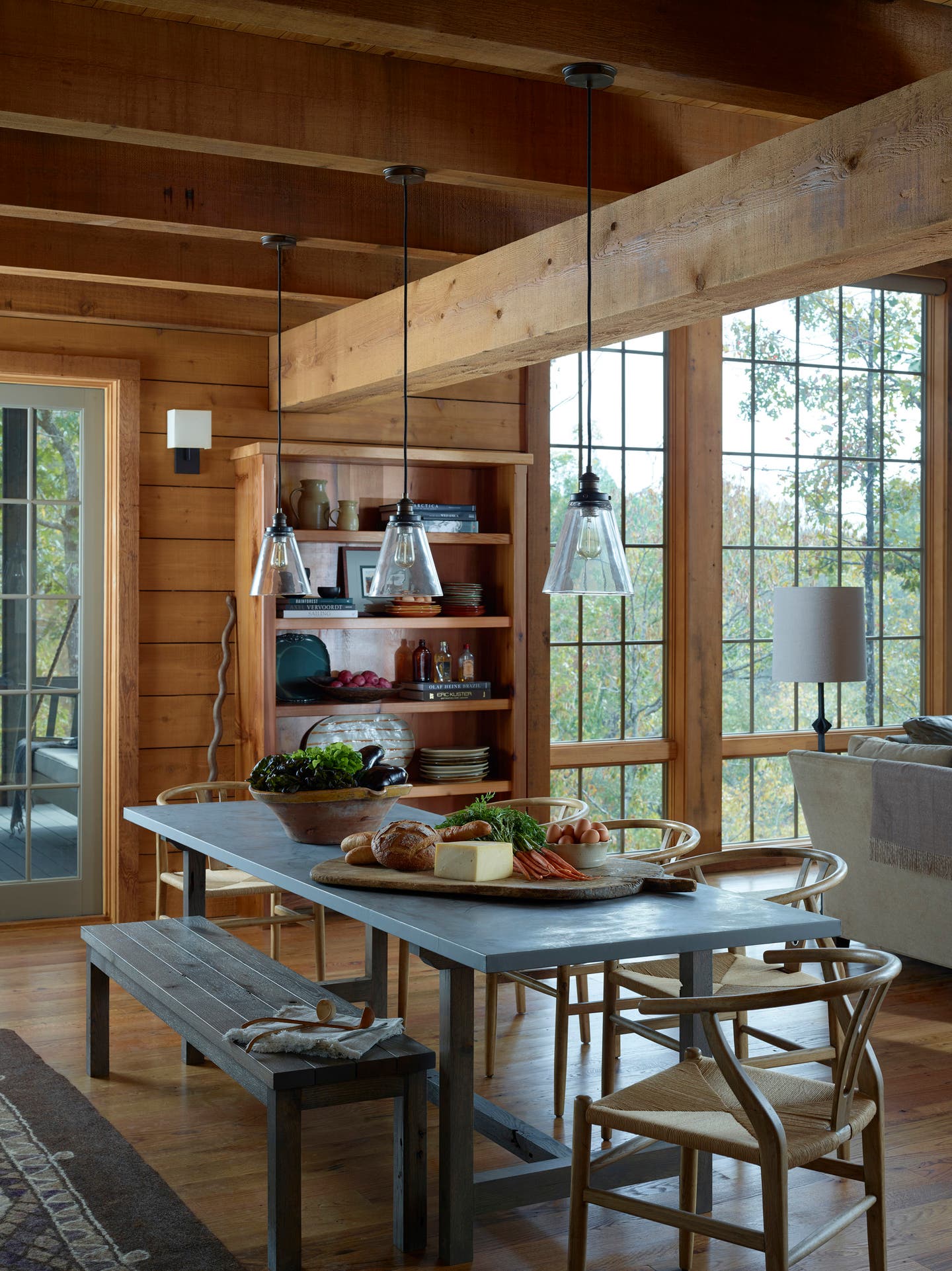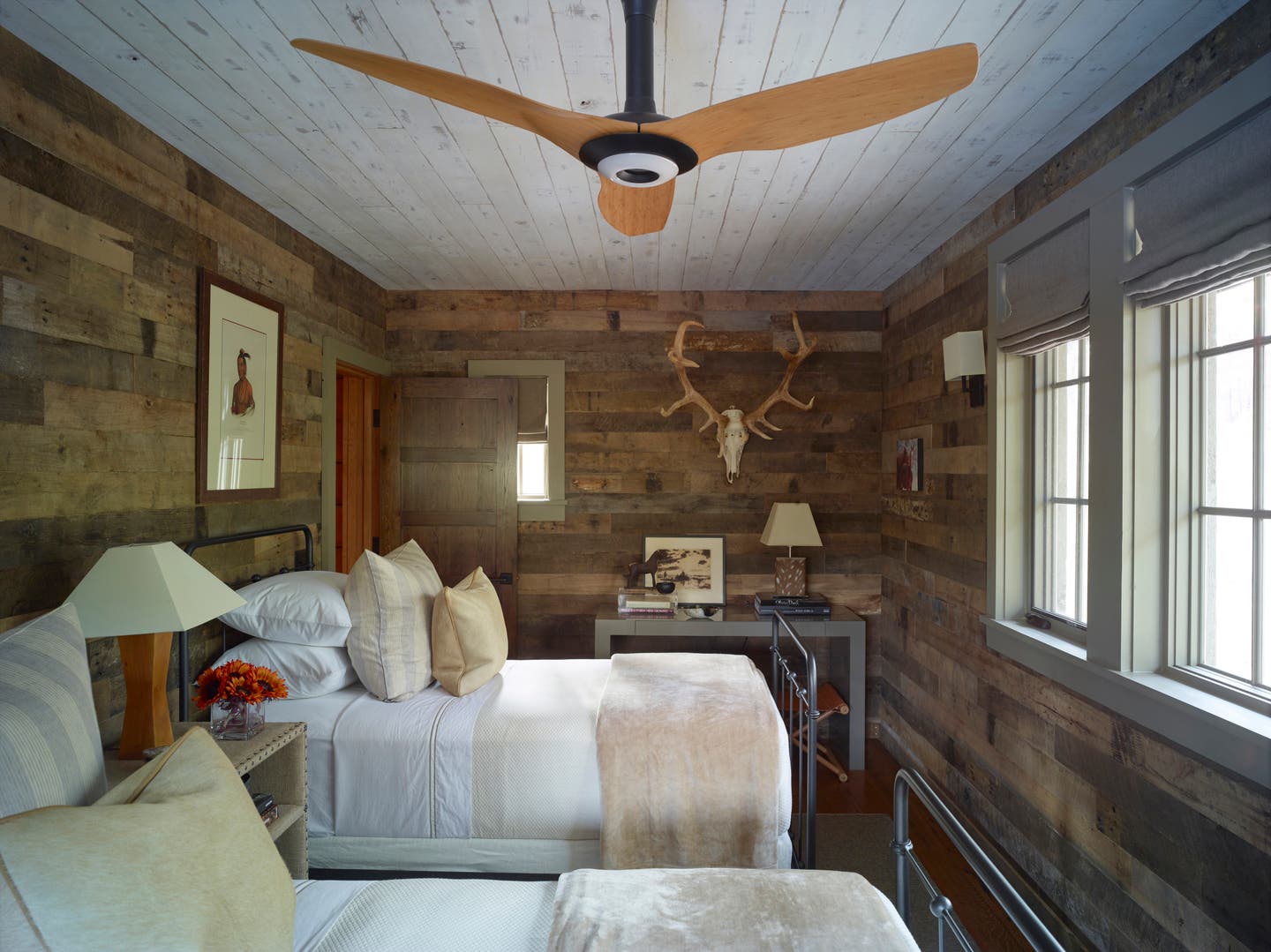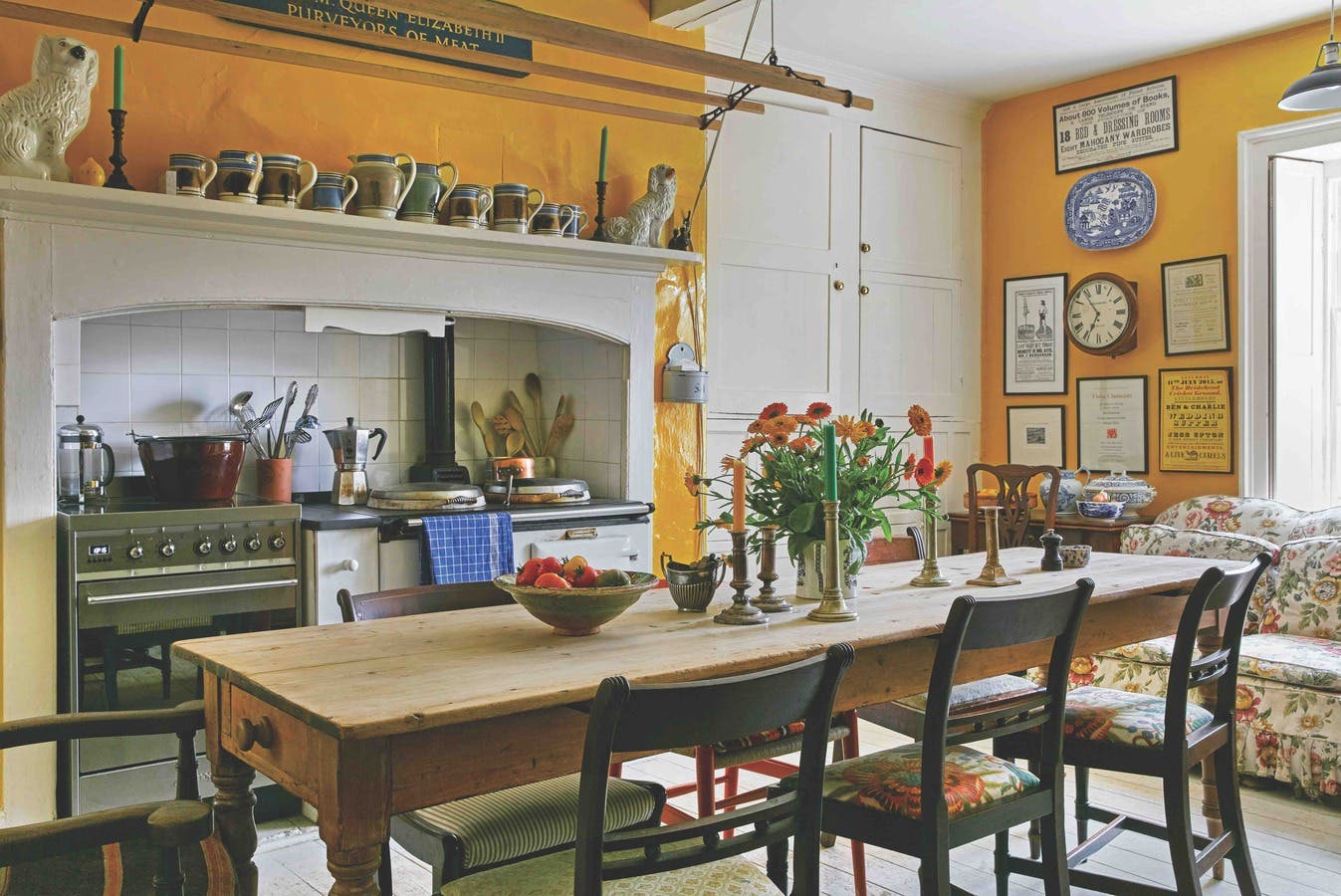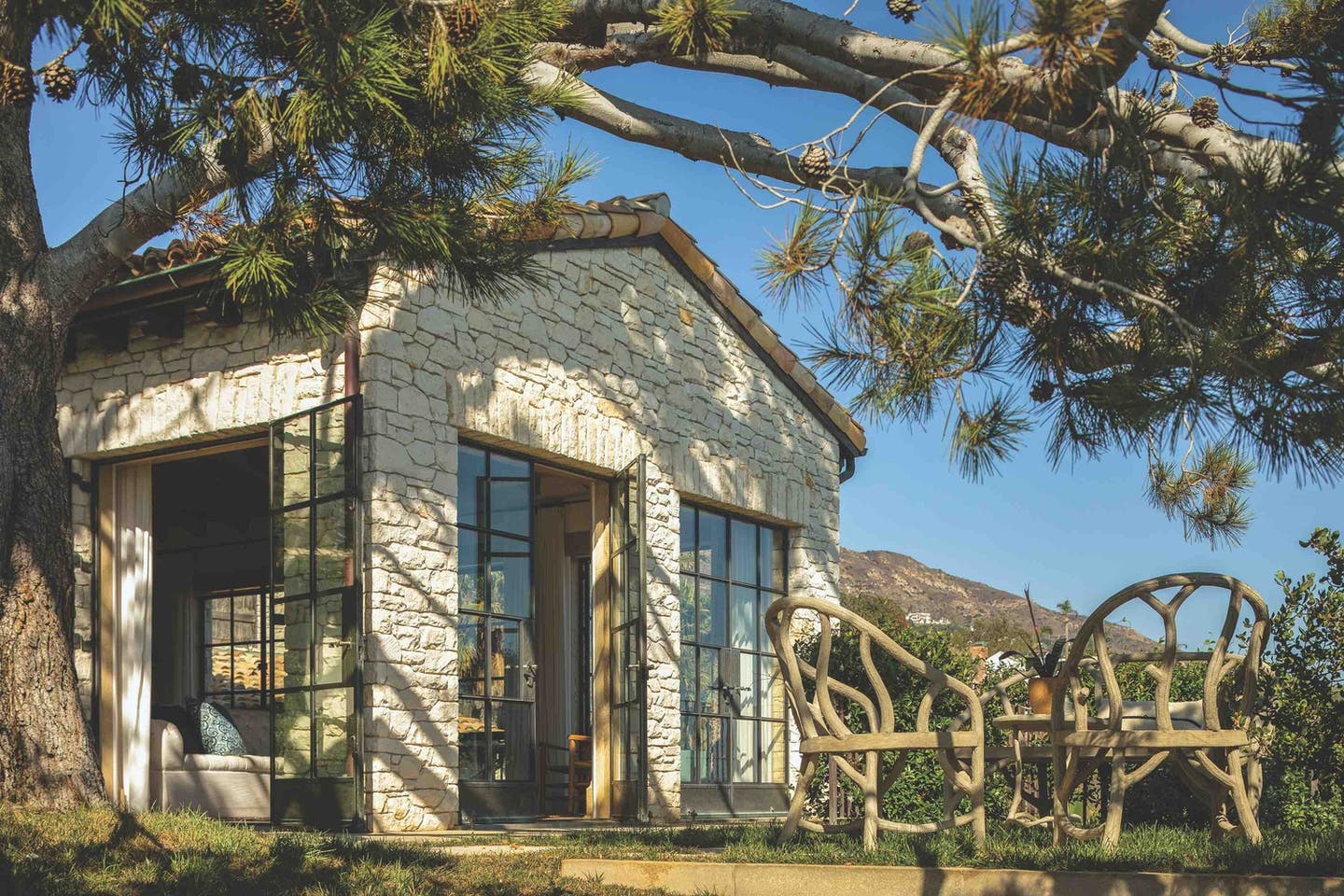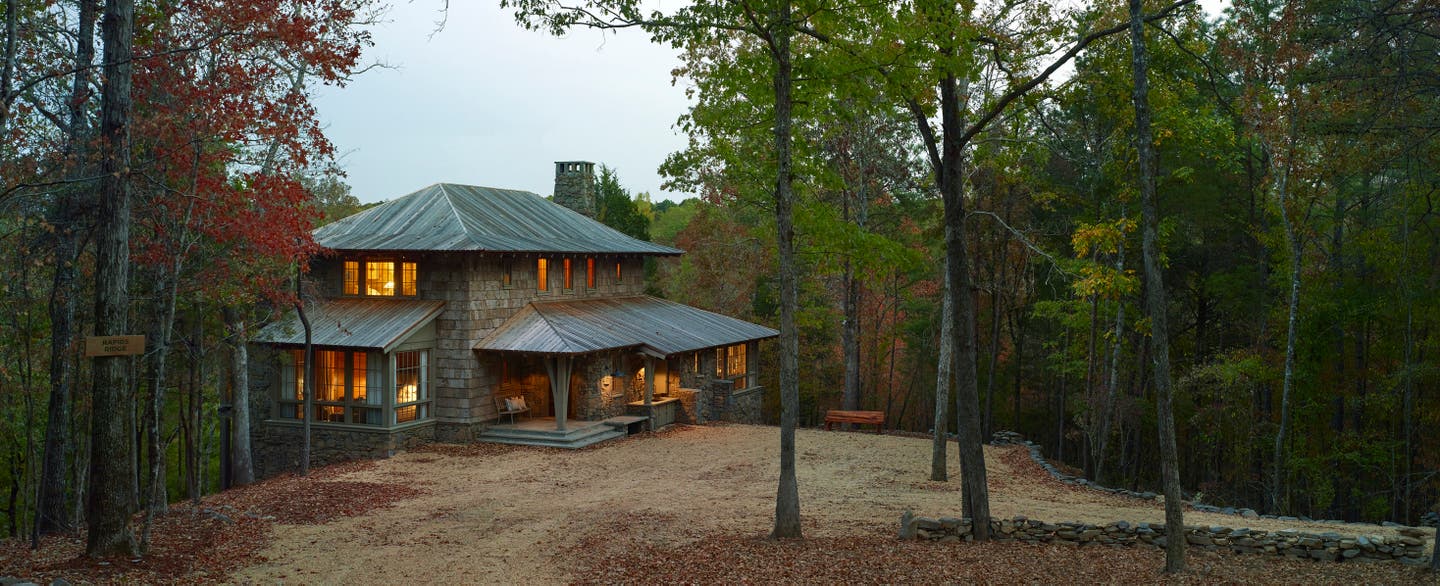
Restoration & Renovation
New Construction and Design of Cahaba River House
Photos by Chris Luker (Luker Photography)
2017 Palladio Award Winner
New Design & Construction, Less Than 5,000 Sq.ft.
Project: Cahaba River House
Winner: Nequette Architecture & Design
Cahaba River House, by Nequette Architecture & Design, sits by Cahaba River on 512 acres, most of which are designated quail preserve. The two-story cottage, located in Bibb County, Alabama, was completed in 2016 and comprises 2,157 square feet, plus 438 square feet of porch space.
The setting significantly informed the design. So remote is the location that there was a discussion of whether to supply power to the house or remain off the grid (the work was performed using a generator).
The natural environment lent itself to the use of onsite materials, which was done whenever possible—much of the wood came from surrounding trees, milled and dried onsite; and the stone was sourced from a neighboring property. That stone was used to form a heavy base on which to build the wood structure. “Shot rock,” or tailings, from a nearby strip mine was also incorporated. After being hand selected, cleaned, and transported to the construction site, the masons introduced it in slivers among large boulders to create a textured dry stack.
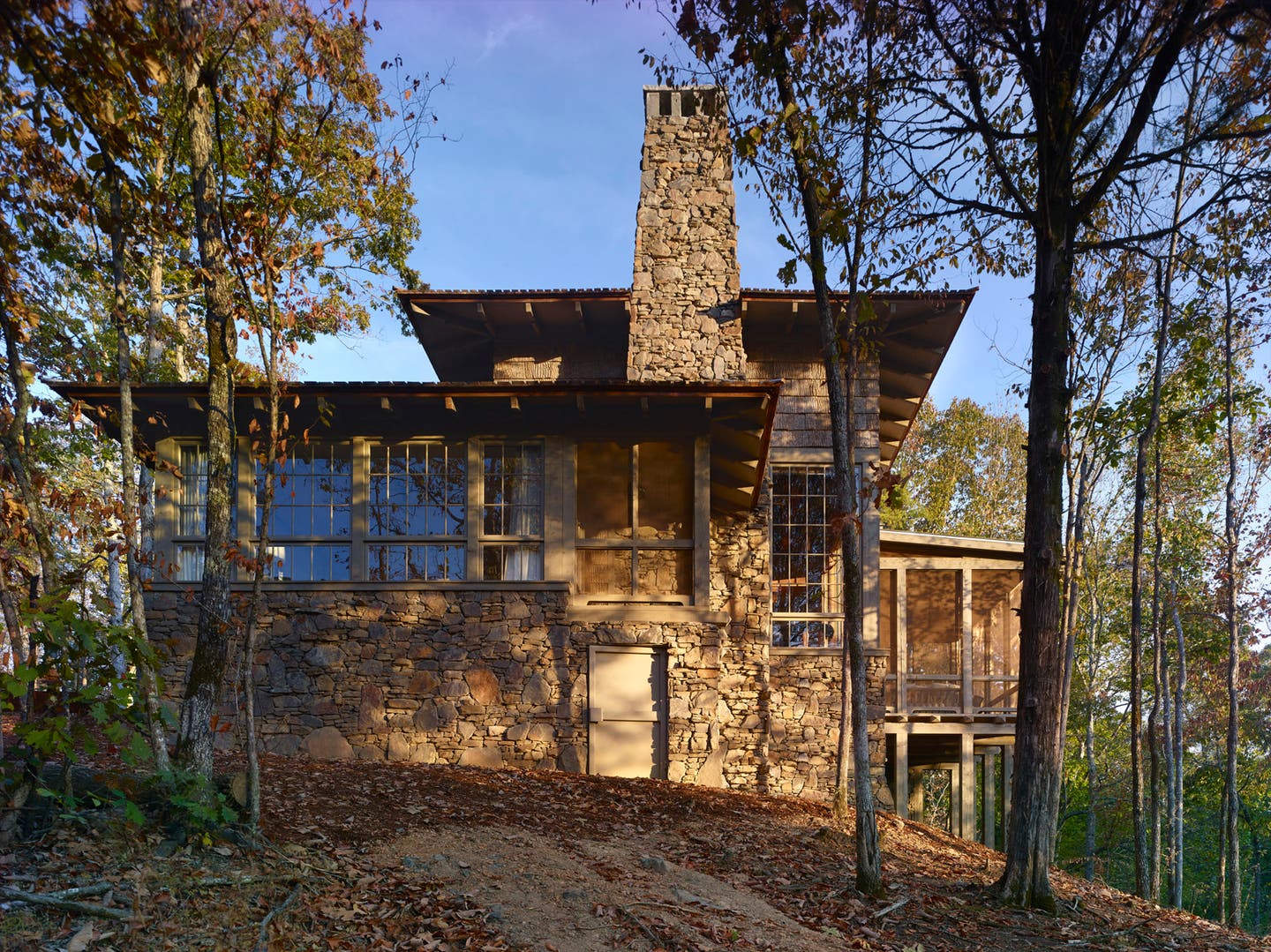
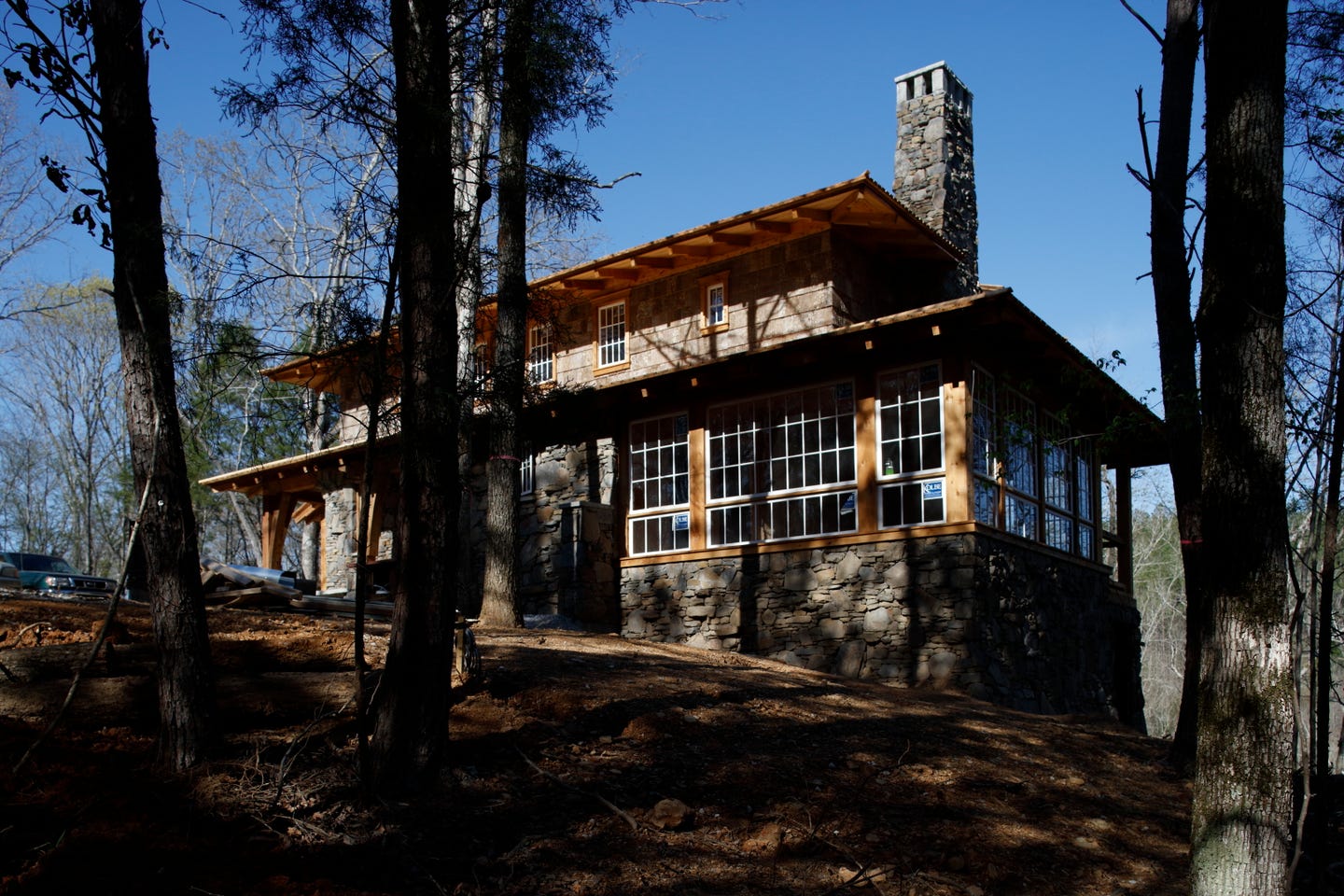
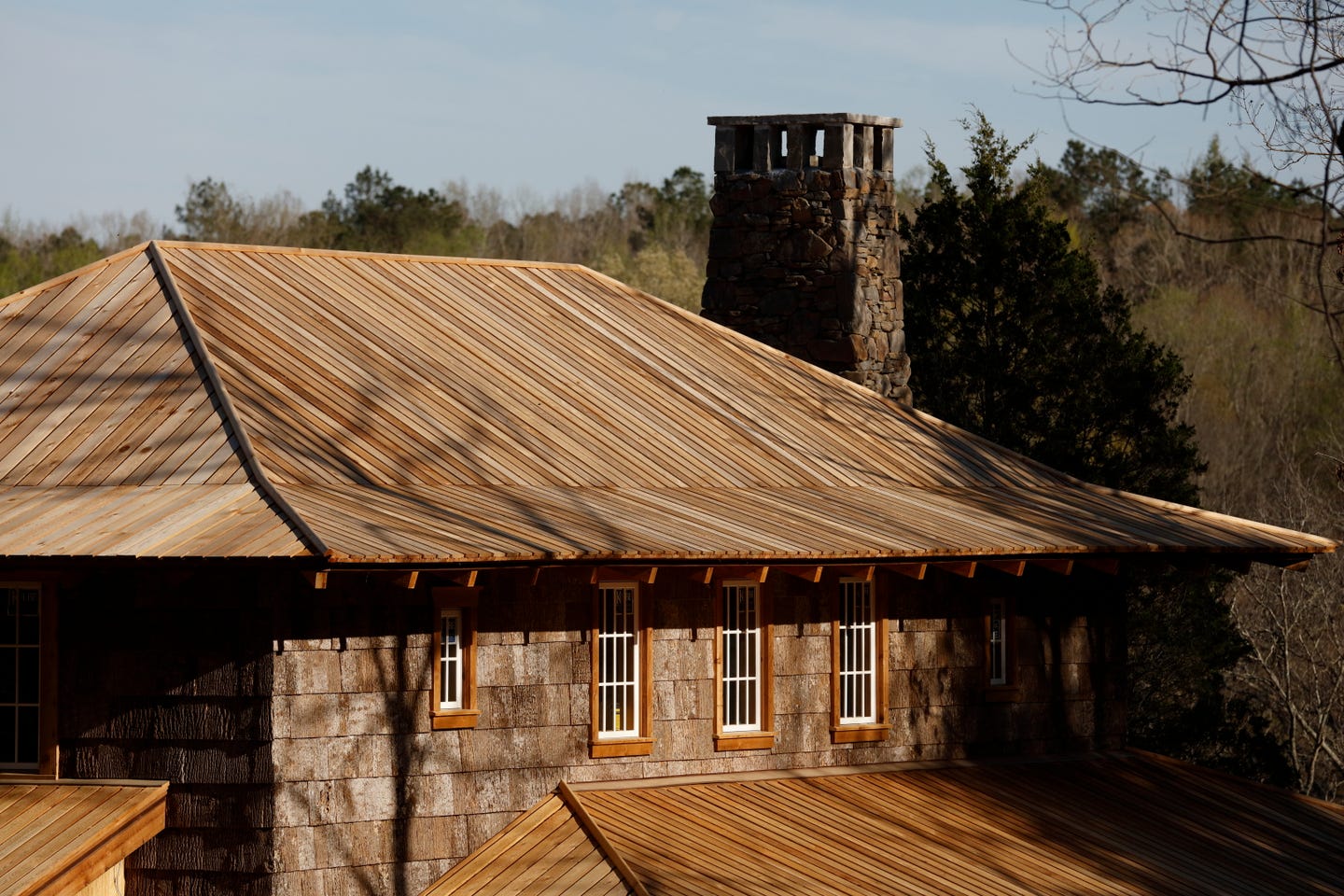
“This small house on the river harkens back to an earlier time when authentic cottages and cabins in the wilderness were essentially constructed by hand with raw materials from the natural environment’s immediate surroundings,” says Seth Rodwell, project manager. “ The use of natural materials, often left in their raw natural state, were the most practical method to create functional architecture with timeless character and beauty.”
Poplar bark shingles—chosen, in part, so the house would never need painting—and a hipped cedar plank roof add texture and character. Interestingly, the roof was installed as a metal roof would be, but in a reverse board-and-batten pattern over two layers of pressure-treated furring strips—the design intent being to provide air space for weeping. One of the challenges was to make sure the planks matched precisely at the ridge and hips. Similarly, the cladding was mitered at the corners, which required correctly selecting and seaming the irregular thicknesses, widths, and live edges of the shingles.
The interior spaces are a kind of inward extension of the exterior. Wood paneling, planked ceilings, heavy timber beams, and multiple stone fireplaces continue the vernacular theme. “Natural elements of the environment outdoors were brought indoors and preserved in their natural state,” explains Rodwell.“ The selection of natural stone and woods, light stains, and warm color tones for the wall finishes, flooring, and furniture preserve the natural palette of materials and colors found outdoors.”
The great room occupies most of the main level, and all common areas characterized by large expanses of glass chosen to capitalize on views of the river and forested surrounds. Similarly, floor-to-ceiling paned windows in the kitchen, plus its screened porch with stone fireplace, tie the space to the landscape.
The private rooms enjoy small windows for natural light. The master bedroom is off the living room with a private porch tucked behind the fireplace, while the guest bedroom and bathroom are secluded behind the kitchen; a cantilevered children’s loft is found above the kitchen.
The program called for careful consideration of the site’s unique topography, river views, lengthy approach, desire lines down to the water, wooded environs, and opportunities for natural light. The fine craftsmanship of the rustic structure exemplifies what can come from the use of simple tools, vernacular materials, and sensitive design.
